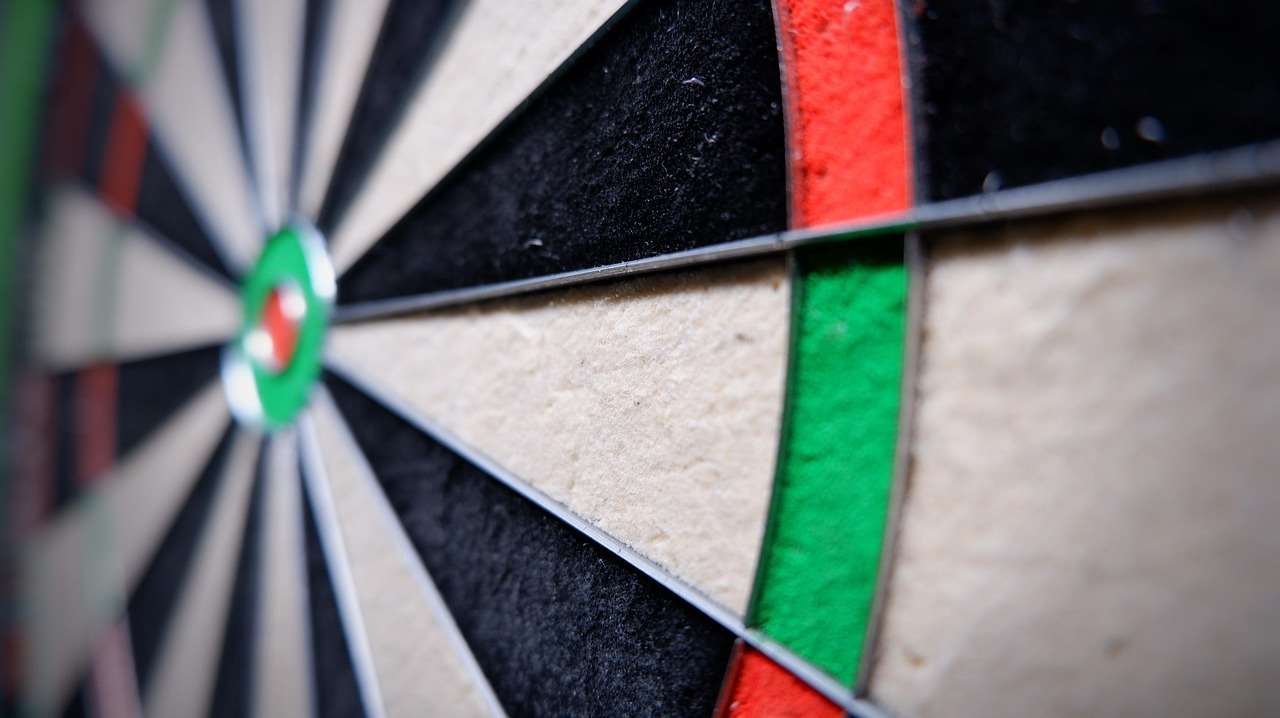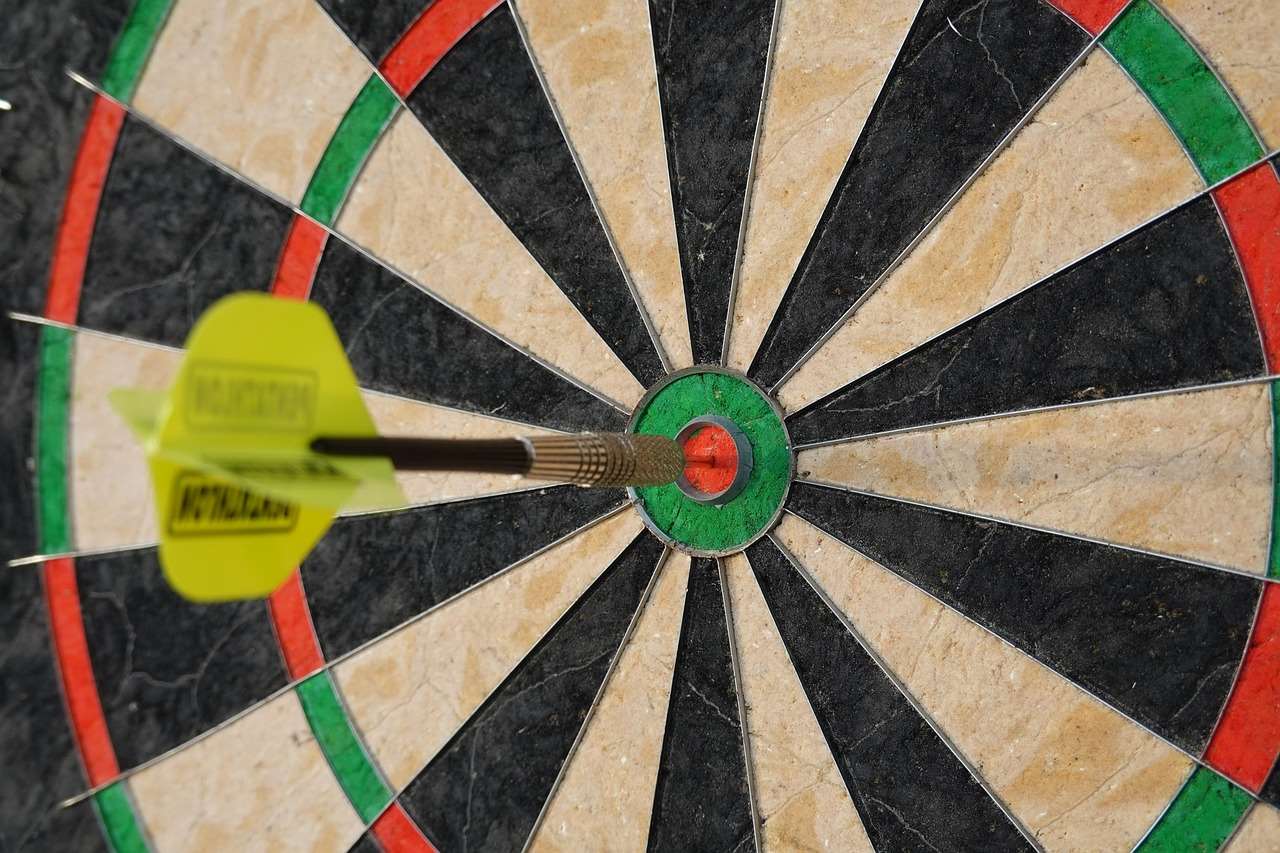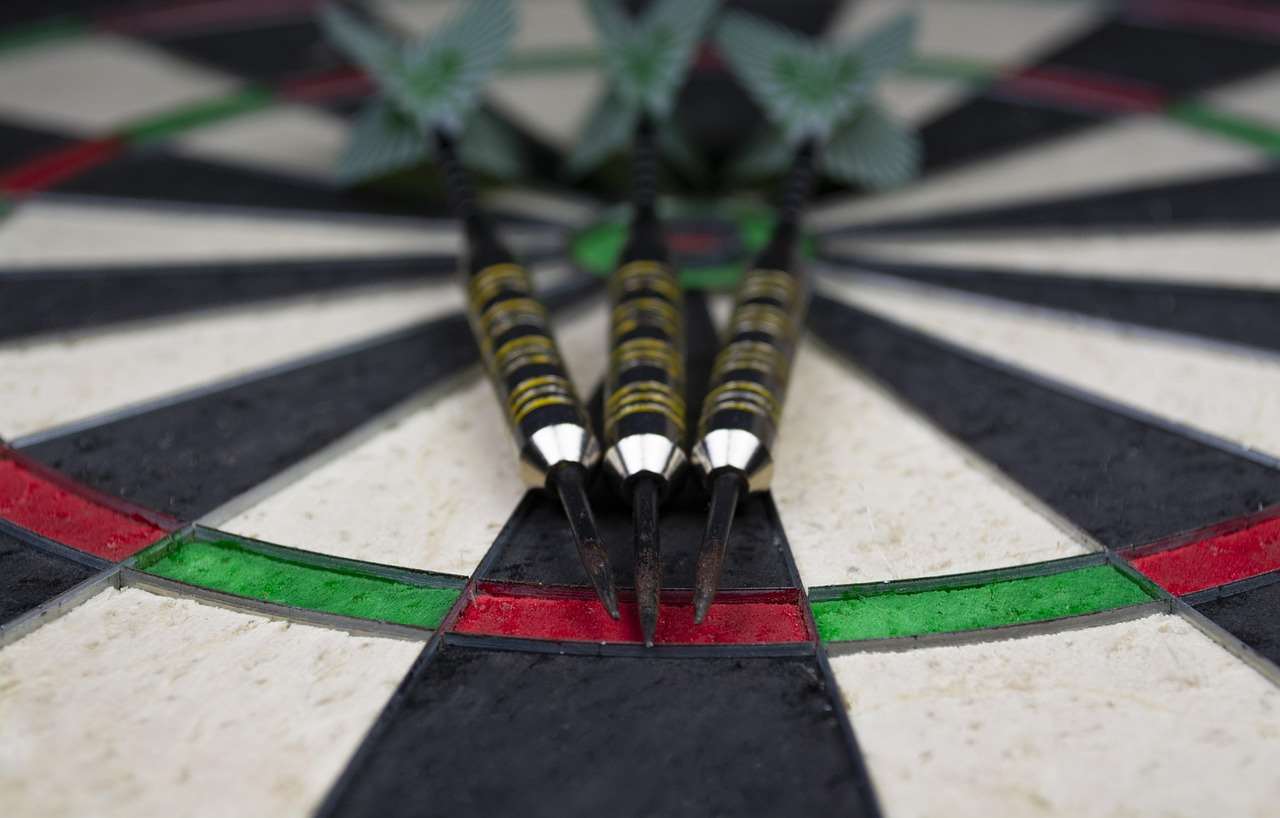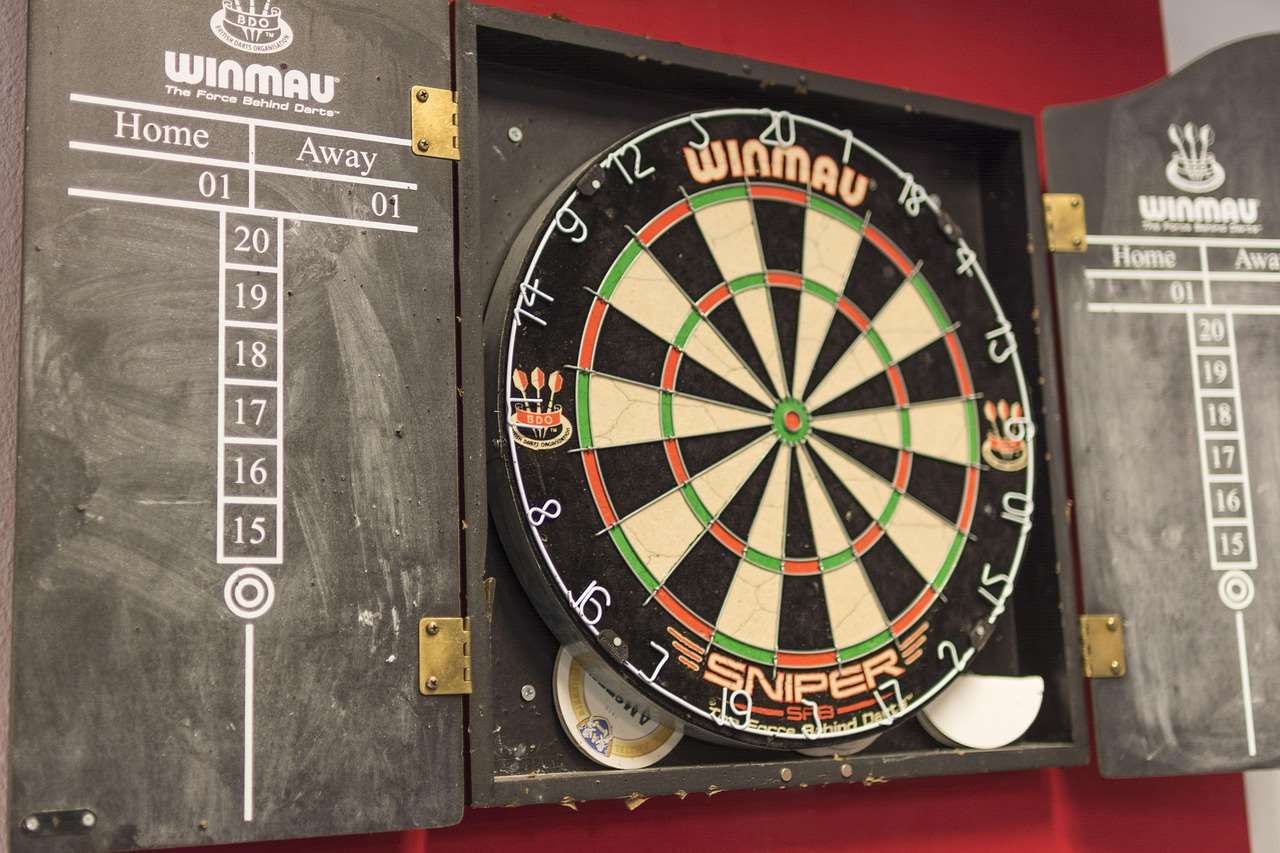In darts, **grouping** refers to the tightness and consistency of your throws; a tight group means your darts land close together, regardless of their proximity to the desired target. This article will explore the nuances of **darts terminology: ‘grouping’**, covering factors that influence it and techniques for improving your own grouping consistency.
⚠️ Still Using Pen & Paper (Of een schoolbord)?! ⚠️
Stap in de toekomst! De Dart Teller -app behandelt alle scoren, stelt kassa voor, en volgt uw statistieken automatisch. It's easier than you think!
Probeer de Smart Dart Teller -app gratis!Klaar voor een upgrade? Klik hierboven!
Understanding Darts Terminology: ‘Grouping’
When discussing **darts terminology: ‘grouping’**, we’re essentially talking about the **precision and repeatability** of your throws. A good group doesn’t necessarily mean you’re hitting bullseyes every time. In plaats van, it indicates that you are consistently repeating your throwing motion, leading to a tight cluster of darts on the board. This consistency is the foundation upon which accuracy is built.

Why is Grouping Important?
Improving your **grouping in darts** is crucial for several reasons. First, consistent grouping makes diagnosing problems easier. If your darts are scattered all over the board, it’s difficult to pinpoint what you’re doing wrong. But with a tight group, you can more easily adjust your aim and technique. Secondly, even if your aim is slightly off, a tight group increases your chances of scoring well. Three darts clustered near the triple 20 still yield a decent score.
Another important facet is the psychological advantage of good **dart grouping**. Seeing your darts consistently landing close together builds confidence, which can positively impact your overall performance. Omgekeerd, scattered throws can lead to frustration and decreased focus.
Factors Affecting Your Dart Grouping
Several factors can influence your **dart grouping**, some more obvious than others. Understanding these factors is the first step towards improving your consistency.
- Stance: A stable and balanced stance is essential. Experiment with different foot positions to find what works best for you.
- Grip: Your grip should be firm but relaxed. Avoid squeezing the dart too tightly, as this can lead to tension and inconsistent releases.
- Throwing Motion: A smooth, fluid throwing motion is key. Avoid jerky movements or excessive wrist action.
- Release Point: Consistency in your release point is critical. Try to release the dart at the same point in your throwing motion every time.
- Follow-Through: A complete and consistent follow-through helps to guide the dart and ensure a clean release.
- Dart Setup: Ensure your flights and shafts are securely attached and in good condition. Loose or damaged equipment can significantly affect dart flight.
- Dart Choice: The weight, barrel shape, and material of your darts can impact your performance. Experiment to find the right darts for your throwing style.
The Impact of Dart Weight and Balance
The weight and balance of your darts play a significant role in **grouping** ability. Heavier darts tend to be more stable in flight, which can make them easier to control. Echter, they also require more effort to throw. Lighter darts are easier to throw but can be more susceptible to wind and other external factors.
The balance of your darts is also important. Front-weighted darts tend to fly straighter, while rear-weighted darts can be more forgiving of slight inconsistencies in your throw. Experiment to find what feels most comfortable and natural for you.

Techniques to Improve Your Grouping
Improving your **dart grouping** requires dedication, practice, and a willingness to experiment. Here are some techniques that can help you improve your consistency:
- Consistent Practice: Regular practice is the most important factor. Even short, focused practice sessions can be more effective than long, infrequent ones.
- Target Practice: Focus on hitting specific targets on the board, such as the triple 20 of bullseye. This will help you develop muscle memory and improve your accuracy.
- Visualisatie: Before each throw, visualize the dart hitting your target. This can help to improve your focus and concentration.
- Record Your Throws: Keep track of your throws to identify patterns and areas for improvement. You can use a notebook, a dart scoring app, or even just a whiteboard.
- Video Analysis: Record yourself throwing darts and analyze your technique. This can help you identify flaws in your stance, grip, Motie gooien, or release point.
- Seek Feedback: Ask a more experienced dart player to watch you throw and provide feedback. They may be able to spot things that you’re not aware of.
The Importance of a Consistent Stance
As mentioned previously, your stance is a cornerstone of accurate **dart grouping**. A stable and balanced stance provides a solid foundation for your throw. Consider these tips for your stance:
- Foot Placement: Position your front foot comfortably on the oche (the throwing line). Experiment with different angles to find what feels most natural.
- Weight Distribution: Distribute your weight evenly between both feet. Avoid leaning too far forward or backward.
- Body Alignment: Keep your body aligned with the target. Avoid twisting or bending at the waist.
Consistency in your stance is just as important as the stance itself. Try to adopt the same stance every time you throw.

Common Mistakes Affecting Grouping
Even experienced dart players make mistakes that can affect their **grouping**. Being aware of these common pitfalls can help you avoid them.
- Overthinking: Thinking too much about your technique can lead to paralysis by analysis. Try to relax and let your muscle memory take over.
- Tension: Holding the dart too tightly or tensing up your muscles can negatively affect your release. Stay relaxed and fluid.
- Inconsistent Release: Releasing the dart at different points in your throwing motion is a common cause of inconsistent grouping. Practice releasing the dart at the same point every time.
- Moving Your Head: Moving your head during your throw can throw off your aim. Keep your head still and focused on the target.
- Ignoring Equipment: Using damaged or ill-suited equipment can significantly impact your performance. Regularly check your darts and replace any worn parts.
It’s also worth considering the impact of external factors like lighting and room temperature, which can subtly influence your concentration and grip.
Advanced Grouping Techniques
Once you’ve mastered the basics, you can explore more advanced techniques to further refine your **dart grouping**. These techniques require a high level of skill and dedication.
- Deliberate Practice: Focus on specific aspects of your technique during practice. Bijvoorbeeld, you might spend one session focusing on your release point and another on your follow-through.
- Mental Game: Develop a strong mental game. This includes visualization, self-talk, and stress management.
- Equipment Optimization: Experiment with different darts, flights, and shafts to find the perfect combination for your throwing style.
- Advanced Drills: Incorporate advanced drills into your practice routine. These might include throwing at moving targets or practicing under pressure.
Remember to celebrate small victories and don’t get discouraged by setbacks. Progress in darts, like in any skill, is not always linear.

Dartboard Condition and its Impact on Grouping
The condition of your dartboard can also influence your perceived **grouping**. A worn-out board with loose fibers can cause darts to bounce out or land inconsistently. Ensure your dartboard is well-maintained and rotated regularly to distribute wear evenly.
Pay attention to the number beds. An old, compressed bed might not hold the dart as well as a new one, leading to misleading grouping patterns. Regular board replacement can improve your confidence and the accuracy of your practice sessions. You can learn more about Basic Darts Fundamentals for Beginners to optimize your overall darting setup.
Also, consider the lighting around your dartboard. Shadows can make it difficult to see the target accurately, affecting your aim and therefore your grouping. Adequate and even lighting is essential for consistent performance.

Choosing the Right Darts for Optimal Grouping
Selecting the right darts is a crucial step in enhancing your **dart grouping**. The ideal dart depends on your throwing style, grip, and personal preferences. Consider factors like weight, barrel shape, and material.
Experiment with different dart setups to find what works best for you. Try different flight shapes and shaft lengths. Small changes can sometimes make a big difference in your grouping.
Don’t be afraid to seek advice from experienced dart players or dart shop professionals. They can offer valuable insights and help you find the perfect darts for your needs. Proper dart selection, combined with focused practice, will significantly impact your ability to achieve tight and consistent groups. Herinneren, while technique is paramount, the right tools enhance your skill, making the learning process more rewarding. Knowing Fun dart game variations with modified rules can also add enjoyment to your practice sessions.
Practical Exercises for Enhancing Your Grouping
To truly improve your **dart grouping**, consistent practice and focused exercises are essential. Incorporate these exercises into your regular training routine:
- The ‘Around the Clock’ Oefening: Start at the 1 segment and work your way around the board, hitting each number in sequence. This drill improves accuracy and consistency.
- The ‘Shanghai’ Oefening: Focus on hitting the single, double, and triple of a specific number in one turn. This drill enhances precision and target acquisition.
- The ‘Doubles Out’ Practice: Practice finishing games by aiming specifically for doubles. This drill develops clutch performance and improves double accuracy.
By incorporating these exercises regularly, you’ll develop the muscle memory and precision needed for consistently tight groupings. Also, understanding How to make darts fairer with handicap rules can make practice sessions more engaging and competitive.
Maintaining Consistency in Your Dart Grouping
Maintaining consistency in your **dart grouping** isn’t just about initial skill; it’s about ongoing habits and awareness. Factors such as fatigue, stress, and even subtle changes in your environment can impact your throws.
Develop pre-throw routines to mentally and physically prepare for each dart. This might include deep breaths, a visual check of your stance, or a quick assessment of the board. Consistent routines help anchor your technique and minimize distractions. Verder, remember that even small adjustments to Darts -regels aanpassen voor beginners can create a more conducive practice setting.
Prioritize sleep and hydration, as these factors directly influence concentration and motor skills. Regularly evaluate your equipment for wear and tear, replacing flights or shafts as needed. By proactively addressing potential disruptions, you can safeguard your hard-earned consistency.
Being aware of factors that can impact your game and incorporating strategies for managing them is vital to keeping your groups tight.
Darts Terminology: ‘Grouping’ – The Key Takeaways
Understanding **darts terminology: ‘grouping’** and striving for consistency is paramount in improving your darts game. It’s not just about hitting the target, but about reliably repeating your throw. By focusing on your stance, grip, Motie gooien, equipment, and practicing regularly, you can develop tighter groupings and ultimately achieve better scores. Strive for consistency and remember to enjoy the process!
Ready to take your dart game to the next level? Start by focusing on the techniques outlined in this article, and watch your consistency—and your scores—improve. Get throwing!
Hoi, Ik ben Dieter, En ik heb Dartcounter gemaakt (Dartcounterapp.com). Mijn motivatie was geen darts -expert - helemaal tegenovergestelde! Toen ik voor het eerst begon te spelen, Ik hield van het spel, maar vond het moeilijk en afleidend om nauwkeurige scores te houden en statistieken te volgen.
Ik dacht dat ik niet de enige kon zijn die hiermee worstelde. Dus, Ik besloot om een oplossing te bouwen: een eenvoudig te gebruiken applicatie die iedereen, Ongeacht hun ervaringsniveau, zou kunnen gebruiken om moeiteloos te scoren.
Mijn doel voor Dartcounter was eenvoudig: Laat de app de nummers afhandelen - het scoren, de gemiddelden, de statistieken, Zelfs checkout suggesties - zodat spelers puur kunnen richten op hun worp en genieten van het spel. Het begon als een manier om het probleem van mijn eigen beginners op te lossen, En ik ben heel blij dat het is uitgegroeid tot een nuttig hulpmiddel voor de bredere darts -community.